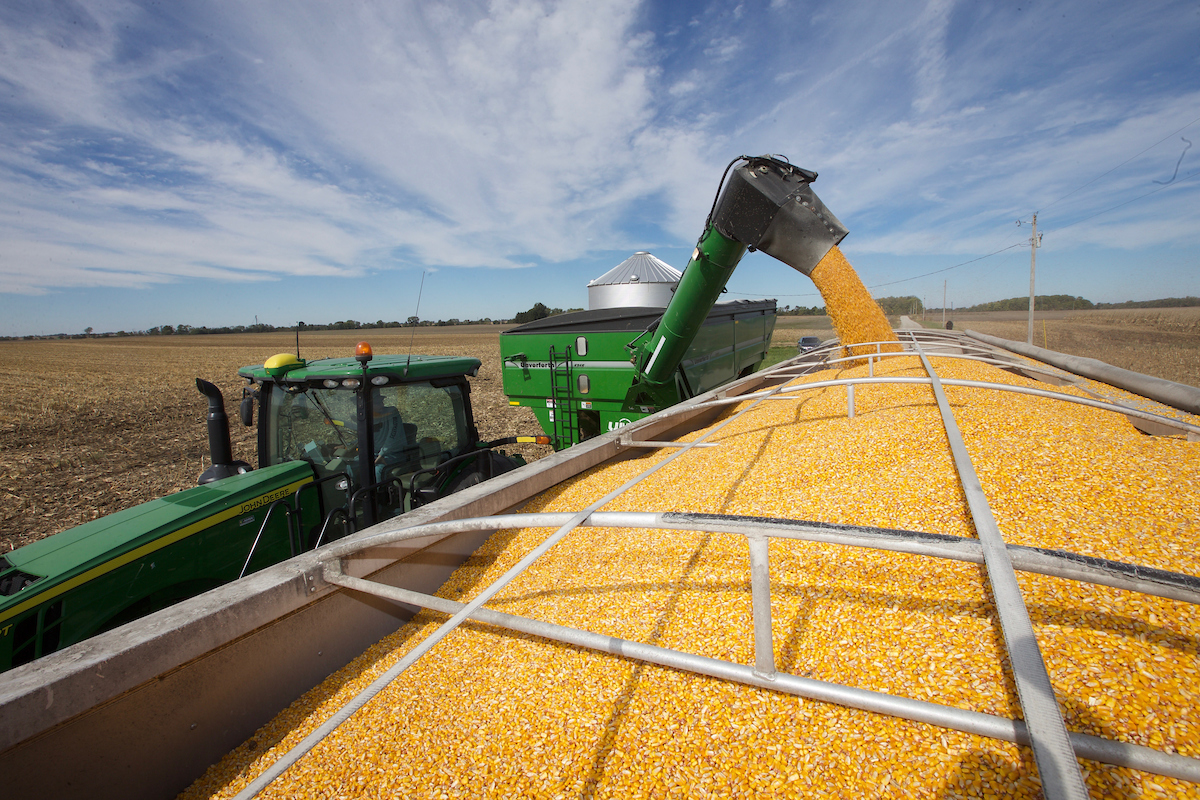Report on the Long-Term Agroecosystem Research (LTAR) Field Day
Advancing Sustainable Cropping Systems in Alignment with Global Goals
Michigan State University (MSU) will host its annual Long-Term Agroecosystem Research (LTAR) field day on September 4, 2025, at the Kellogg Biological Station (KBS). The event, titled “Sustainable Cropping Systems in Action,” is designed for agricultural and conservation professionals to explore practices that directly support the United Nations Sustainable Development Goals (SDGs).
Alignment with UN Sustainable Development Goals (SDGs)
The research and practices highlighted at the event contribute significantly to several key SDGs:
SDG 2: Zero Hunger & SDG 12: Responsible Consumption and Production
- The LTAR experiment directly addresses sustainable food production systems by comparing conventional methods with an “aspirational” system designed for long-term resilience and efficiency.
- Focus areas include maximizing crop diversity with a five-crop rotation, enhancing nutrient circularity, and improving profitability, which are crucial for creating sustainable food systems and responsible production patterns.
SDG 13: Climate Action & SDG 15: Life on Land
- The event will feature innovations aimed at climate mitigation and adaptation, such as the use of cover crops and nitrification inhibitors to reduce greenhouse gas emissions.
- A central theme is the protection and restoration of terrestrial ecosystems through practices that improve soil health, keep living roots in the ground, and utilize stacked conservation techniques, directly contributing to halting land degradation.
SDG 9: Industry, Innovation, and Infrastructure & SDG 17: Partnerships for the Goals
- The integration of precision drone technology into the aspirational cropping system showcases the role of innovation in building resilient and sustainable agricultural infrastructure.
- The field day itself serves as a platform for partnership, inviting stakeholders to review research outcomes and collaborate on the future design of sustainable agricultural systems.
Research Focus: A Comparative Analysis of Cropping Systems
The event will present early results from the first four years of the LTAR experiment, which evaluates two distinct agricultural models:
Business-as-Usual System
- Represents conventional farming practices.
- Features a corn/soybean rotation with conventional tillage.
Aspirational Cropping System
- Designed to represent a future model for Michigan agriculture.
- Seeks to maximize crop diversity, nutrient efficiency, animal integration, and soil protection.
- Employs a five-crop rotation, stacked conservation practices, and precision technologies.
Field Day Agenda and Key Topics
Attendees will receive information on a range of topics critical to sustainable agriculture:
- Early experimental results concerning yield, profitability, and soil health.
- Innovations and best practices for cover crops.
- The use and impact of nitrification inhibitors.
- Advances in short corn varieties and integrated pest management.
- Application of precision technology in modern farming.
- Resources available to support the on-farm adoption of these practices.
Event Logistics and Registration
Event Details
- Date: Thursday, September 4, 2025
- Time: 9:30 a.m. to 1:30 p.m. (Doors open at 9:00 a.m.)
- Location: Kellogg Biological Station (KBS), 9693 N 40th St. Hickory Corners, MI 49060
- Cost: Free (Morning refreshments, snacks, and lunch are provided)
Registration and Professional Credits
- Registration is required by August 22, 2025.
- Pending professional credits include one restricted use pesticide credit, 2.5 certified crop adviser (CCA) credits, and a Phase 1 Michigan Agriculture Environmental Assurance Program (MAEAP) training credit.
Call for Stakeholder Collaboration
As the first five-year rotation of the aspirational system concludes in 2026, the KBS LTAR initiative is seeking input from stakeholder partners to evaluate its effectiveness and guide the next phase of research. Agricultural and conservation professionals are encouraged to attend and contribute to the ongoing dialogue shaping the future of sustainable agriculture.
Analysis of Sustainable Development Goals in the Article
1. Which SDGs are addressed or connected to the issues highlighted in the article?
- SDG 2: Zero Hunger: The article’s core focus is on “sustainable cropping systems,” “yield,” and “soil health,” which are central to ensuring sustainable food production.
- SDG 9: Industry, Innovation, and Infrastructure: The article highlights the use of “precision drone technology,” “nitrification inhibitors,” and other innovations aimed at making agriculture more sustainable and efficient.
- SDG 12: Responsible Consumption and Production: The research described aims to improve “nutrient circularity and efficiency” and compares conventional farming with an “aspirational” system that uses stacked conservation practices, aligning with the goal of sustainable management of natural resources.
- SDG 15: Life on Land: The emphasis on practices that “protect the soil,” improve “soil health,” and the inclusion of “cover crops” and diverse rotations directly contribute to protecting terrestrial ecosystems and halting land degradation.
- SDG 17: Partnerships for the Goals: The event is a collaboration between Michigan State University, the Long-Term Agroecosystem Research (LTAR) site, and various “agricultural and conservation professionals.” The article explicitly invites “stakeholder-input” and plans to “work with stakeholder partners,” demonstrating a multi-stakeholder approach to achieving sustainability.
2. What specific targets under those SDGs can be identified based on the article’s content?
- Target 2.4: “By 2030, ensure sustainable food production systems and implement resilient agricultural practices that increase productivity and production, that help maintain ecosystems… and that progressively improve land and soil quality.” The article directly addresses this by describing the LTAR experiment, which compares a “business-as-usual” system with an “aspirational” system designed to be more sustainable, improve soil health, and maintain yields.
- Target 9.4: “By 2030, upgrade infrastructure and retrofit industries to make them sustainable, with increased resource-use efficiency and greater adoption of clean and environmentally sound technologies…” The article mentions the integration of “precision drone technology,” “nitrification inhibitors,” and other “innovations” into the aspirational cropping system as a way to upgrade agricultural practices.
- Target 12.2: “By 2030, achieve the sustainable management and efficient use of natural resources.” The aspirational system’s goal to “maximize… nutrient circularity and efficiency” is a direct effort to achieve this target.
- Target 15.3: “By 2030, combat desertification, restore degraded land and soil… and strive to achieve a land degradation-neutral world.” The research focus on improving “soil health,” using “cover crops,” and implementing practices that “protect the soil” directly supports this target by aiming to reverse or prevent land degradation from conventional farming.
- Target 17.17: “Encourage and promote effective public, public-private and civil society partnerships…” The field day itself is an example of a partnership between a public university (MSU) and stakeholders from the agricultural community (“agricultural and conservation professionals”) to share knowledge and promote sustainable practices. The call to “work with stakeholder partners to reevaluate what works” reinforces this collaborative approach.
3. Are there any indicators mentioned or implied in the article that can be used to measure progress towards the identified targets?
- For Target 2.4: The article explicitly states that the research experiment will share “findings about yield, profitability and soil health.” These three metrics serve as direct indicators to measure the performance and sustainability of the different cropping systems.
- For Target 9.4: An implied indicator is the rate of “adoption of these practices on-farm.” The field day is designed to provide “resources to support the adoption,” and the reevaluation of the system will assess “what works, what doesn’t,” which is a measure of the effectiveness and viability of these new technologies.
- For Target 12.2: The concept of “nutrient circularity and efficiency” is mentioned as a goal. Progress could be measured by tracking nutrient inputs versus outputs and losses in the different systems, which is an implied indicator of resource efficiency.
- For Target 15.3: “Soil health” is a key indicator mentioned. This can be measured through various physical, chemical, and biological tests to track changes in soil quality over time under the different agricultural systems. The goal to “keep roots in the ground” is another measurable practice contributing to this.
- For Target 17.17: The number and engagement level of attendees (“agricultural and conservation professionals”) at the “annual field day” serve as an indicator of partnership activity. Furthermore, the process of using “stakeholder-input” to design the next phase of the aspirational system is a qualitative indicator of an effective partnership in action.
4. Summary Table of SDGs, Targets, and Indicators
| SDGs | Targets | Indicators |
|---|---|---|
| SDG 2: Zero Hunger | 2.4: Ensure sustainable food production systems and implement resilient agricultural practices. | Measurements of “yield,” “profitability,” and “soil health” in different cropping systems. |
| SDG 9: Industry, Innovation, and Infrastructure | 9.4: Upgrade infrastructure and retrofit industries to make them sustainable… with greater adoption of clean and environmentally sound technologies. | The “adoption of these practices on-farm” (e.g., precision technology); Evaluation of “what works, what doesn’t” regarding new technologies. |
| SDG 12: Responsible Consumption and Production | 12.2: Achieve the sustainable management and efficient use of natural resources. | The degree of “nutrient circularity and efficiency” achieved in the aspirational system. |
| SDG 15: Life on Land | 15.3: Combat desertification, restore degraded land and soil. | Metrics for “soil health”; Implementation of practices that “protect the soil” (e.g., cover crops, crop rotation). |
| SDG 17: Partnerships for the Goals | 17.17: Encourage and promote effective public, public-private and civil society partnerships. | The “annual field day” event; The use of “stakeholder-input” and collaboration with “stakeholder partners.” |
Source: canr.msu.edu






